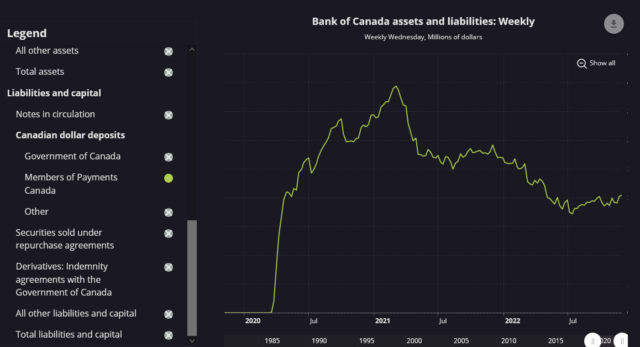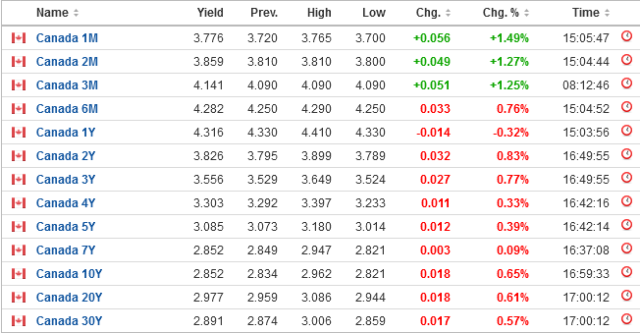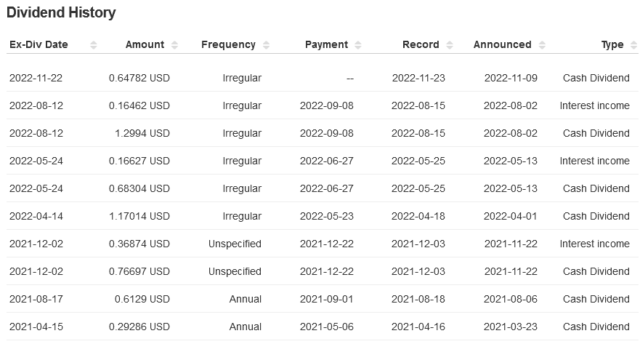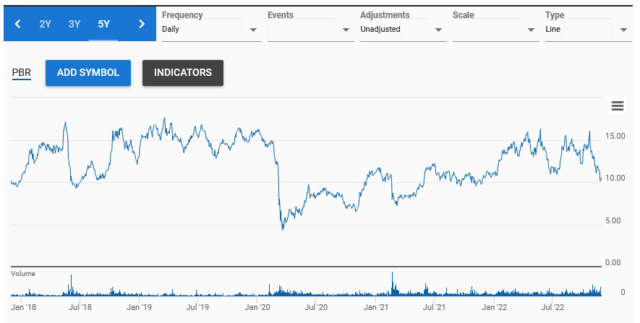I was expecting a 25bps raise, but they did 50bps instead, which wasn’t entirely out of the realm of possibilities. The short-term bank rate is now 4.25%, while 10-year government debt yields 2.78% – extreme inversion.
The second to last paragraph of the relatively terse Bank of Canada announcement says (with my bold-font emphasis):
CPI inflation remained at 6.9% in October, with many of the goods and services Canadians regularly buy showing large price increases. Measures of core inflation remain around 5%. Three-month rates of change in core inflation have come down, an early indicator that price pressures may be losing momentum. However, inflation is still too high and short-term inflation expectations remain elevated. The longer that consumers and businesses expect inflation to be above the target, the greater the risk that elevated inflation becomes entrenched.
This “entrenchment” of inflation expectations is the key variable. As long as people believe in inflation, demand will continue to be high. Run through this thought experiment – if you think the purchasing power of your money is going into the toilet, what do you do? Buy more stuff while you can.
Also, we’re in the tail-end of what I will call the “covid effect”, namely after suffering from two years of lockdowns and general malaise, people are spending money because they haven’t been spending for the previous two years. This Christmas is probably going to be the end of it. In early 2023, I’m expecting a sobering-up period and this will probably be sharper than most expectations.
The last paragraph:
Looking ahead, Governing Council will be considering whether the policy interest rate needs to rise further to bring supply and demand back into balance and return inflation to target. Governing Council continues to assess how tighter monetary policy is working to slow demand, how supply challenges are resolving, and how inflation and inflation expectations are responding. Quantitative tightening is complementing increases in the policy rate. We are resolute in our commitment to achieving the 2% inflation target and restoring price stability for Canadians.
The “will be considering” is a very different change of language than “will need to rise” to describe the next interest rate action.
Finally, quantitative tightening is a slightly misleading term at the moment simply because there is only a billion dollars of Canada Mortgage Bonds due to mature on December 15, and then the next tranches of maturities is not until February 1st (with a $17 billion slab of near zero-coupon debt due for maturity). Reserves at the Bank of Canada continue to be around the $200 billion level and have not moved for the past 6 months or so:
Those banks are very happy to keep their money at the Bank of Canada and earning 4.25% – you’re certainly not going to give a sketchy customer a leveraged unsecured loan at 6%! The reserves will get bled out as QT resumes in February and concurrent with the Federal government doing what it does best – deficit spending.
My prediction for the January 25, 2023 announcement is a 0.25% rate increase to 4.5%. The expectations for retail sales during Christmas season might be even better than expected – especially given that we still aren’t very good at mentally adjusting the “same-store-sales” numbers down 10% to account for inflation!





